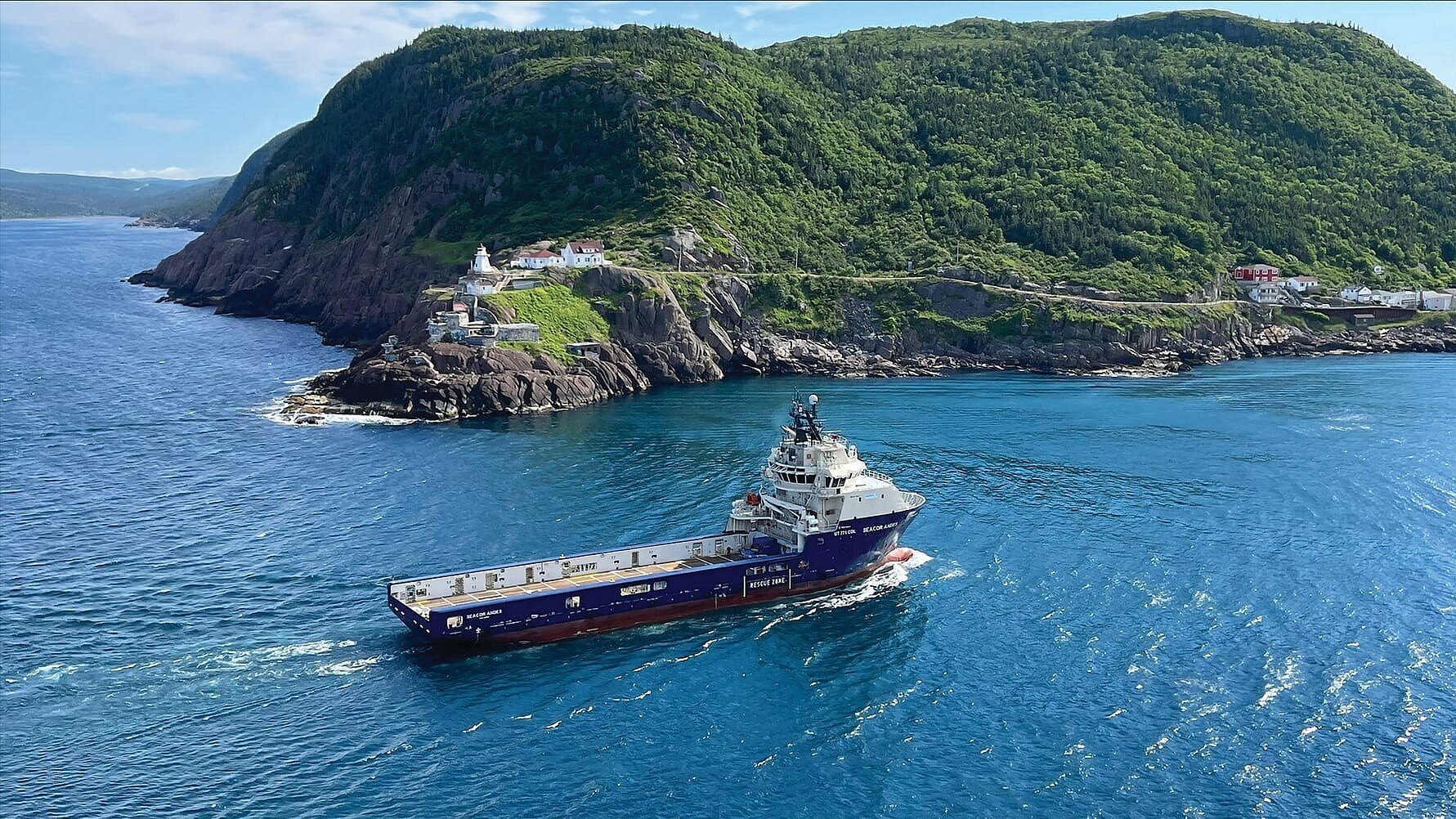Seacor PSVs to have Kongsberg upgrades

The Seacor Andes is one of four vessels that will have a new energy storage system installed (Source: Kongsberg)
Houston-based Seacor Marine Holdings Inc. is to install Kongsberg Maritime energy storage systems on four platform supply vessels (PSVs) – the Seacor Alps, Seacor Andes, Seacor Atlas, and Seacor Ohio.
The four vessels, built to Kongsberg Maritime UT771 CDL design, will be adapted for hybrid operation with the installation of containerised Deckhouse Energy Storage Systems together with switchboards and thruster control systems. The upgrade will also include the installation of new Kongsberg Maritime K-Pos Dynamic Positioning (DP) systems to replace the existing DP installations.
The project, expected to start in December 2024 and take several months, is the latest initiative in Seacor’s environmental efficiency drive and will mean that more than 50% of the company’s fleet will have hybrid power installations.
A Deckhouse Energy Storage System will also be installed on the Seacor Yangtze, of the same design, starting within the next few weeks. The upgrade will take place at Ulsteinvik in Norway.
John Gellert, Seacor Marine’s CEO, commented: “Seacor Marine was one of the first offshore operators to install battery hybrid systems, and this announcement marks a significant step in our ongoing efforts to enhance operational efficiency and reduce the environmental impact of our fleet. We are excited to offer our clients additional hybrid PSVs that operate efficiently through reduced fuel consumption and related operating costs, while also reducing greenhouse gas emissions.”
Kongsberg Maritime’s senior vice president, Aftermarket Sales, James Poulton, said: "Seacor Marine is one of the most experienced operators of hybrid battery power systems in the offshore market, and we are delighted they have again chosen to expand their fleet of hybrid PSVs with Kongsberg Maritime technology. We see that by installing battery power, fuel consumption in DP operation mode on these vessels can be reduced by as much as 20%."
“In addition to batteries, the conversion will also feature a shore connection, enabling connection to power grids when in port, which greatly reduces the amount of engine running hours and emissions from diesel fuels,” he added.
